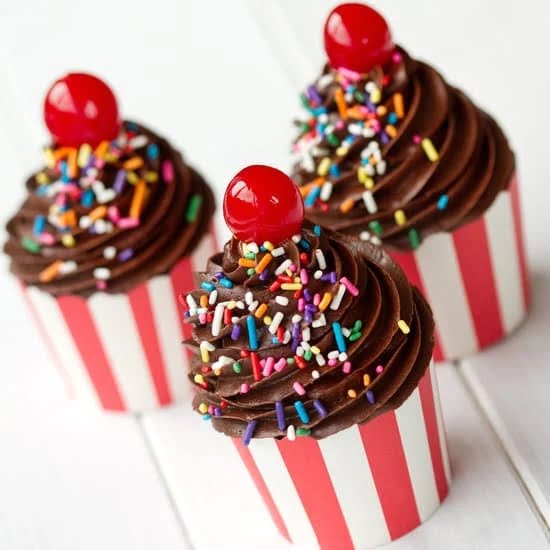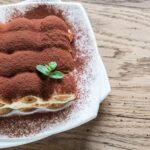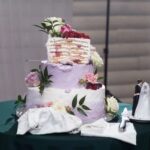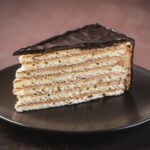Cake decor icing plays a crucial role in the art of cake decoration, allowing bakers to create intricate designs and beautiful finishes. This essential element is what brings a cake to life, making it visually appealing and adding that extra touch of sweetness. In this article, we will explore the world of cake decor icing, from its different types to techniques for applying it and top trends in the cake decoration industry.
When it comes to decorating cakes, the right type of icing can make all the difference. From buttercream to royal icing and fondant, there are various options available, each with its own unique properties and uses. We will delve into these different types of cake decor icing, discussing their characteristics and best applications for achieving professional-looking results.
Choosing the right cake decor icing for your specific cake can be a daunting task. Factors such as the design of the cake, climate conditions, and personal preferences all come into play when making this decision. In this article, we will provide valuable insights into how to select the perfect icing for your cake based on these factors, ensuring that your creation looks as good as it tastes.
Different Types of Cake Decor Icing
When it comes to cake decorating, choosing the right type of icing is crucial for achieving the desired look and taste. There are several different types of cake decor icing to choose from, each with its own unique characteristics and uses. Here, we will explore some of the most popular options, including buttercream, royal icing, fondant, and more.
Buttercream
Buttercream is one of the most versatile and widely used cake decor icings. Made from butter, powdered sugar, and flavorings, this creamy icing is perfect for spreading, piping, and creating various textures and designs on cakes. It can be flavored in a multitude of ways to complement different cake flavors and fillings.
Royal Icing
Royal icing is a smooth, hard-drying icing made from egg whites or meringue powder, powdered sugar, and flavorings. This type of icing is commonly used for intricate designs such as lacework or piped flowers that need to hold their shape. It’s also ideal for creating decorative details on gingerbread houses and cookies.
Fondant
Fondant is a pliable icing made from sugar, water, gelatin, and glycerin. It can be rolled out into thin sheets and draped over cakes to create a smooth surface for decorating. Fondant is favored by many cake decorators for its ability to create flawless finishes and intricate decorations.
In addition to these popular options, there are other cake decor icings such as whipped cream frosting, ganache, marzipan, and more that offer unique textures and flavors for decorating cakes. Each type of icing has its own set of advantages and limitations when it comes to cake decoration. Understanding the characteristics of each type will help you choose the right one for your specific cake decorating needs.
Choosing the Right Cake Decor Icing for Your Cake
When it comes to choosing the right cake decor icing for your cake, there are several factors to take into consideration. The type of icing you use can greatly impact the final look and taste of your cake, so it’s important to choose wisely. Here are some key factors to consider when selecting the perfect cake decor icing for your next baking project:
Factors to Consider When Choosing Cake Decor Icing:
1. Flavor: Different types of icing have different flavors, so you’ll want to consider how the taste will complement your cake. Buttercream icing is rich and creamy, while royal icing has a sweet and smooth taste. Fondant, on the other hand, is more neutral in flavor.
2. Texture: The texture of the icing is also an important factor to consider. Buttercream icing is light and fluffy, making it perfect for spreading and piping onto cakes. Royal icing hardens when dry, making it ideal for intricate designs and decorations. Fondant provides a smooth and sleek finish.
3. Decoration Style: Consider the style of decoration you want for your cake. If you’re looking for intricate designs or detailed piping work, royal icing may be the best choice. If you’re going for a more modern and polished look, fondant may be the way to go.
4. Weather Conditions: It’s important to take into account the weather conditions when choosing your cake decor icing. For example, buttercream may not hold up well in warm temperatures, while fondant can withstand heat better.
5. Dietary Restrictions: Finally, consider any dietary restrictions or preferences that may affect your choice of icing. For example, if you need a dairy-free option, you may opt for a vegan buttercream or fondant made without animal products.
By carefully considering these factors, you can choose the right cake decor icing that will best suit your needs and ensure a delicious and beautifully decorated cake.
Tips and Tricks for Applying Cake Decor Icing
When it comes to cake decorating, applying the right type of icing in a smooth and professional manner is essential for achieving a visually stunning result. Whether you are using buttercream, royal icing, fondant, or any other type of cake decor icing, there are some tips and tricks that can help you achieve the perfect finish on your cakes.
One important factor to consider is the temperature of the icing. It’s crucial to work with the icing at the right consistency and temperature to ensure smooth application.
To achieve a flawless finish when applying cake decor icing, it’s important to start with a crumb coat. A crumb coat is a thin layer of icing that seals in any loose crumbs on the cake, allowing for a smooth finish when the final layer of icing is applied. Chill the cake after applying the crumb coat to set the icing and create a smooth surface for the final layer.
Another tip for achieving professional results with cake decor icing is to use the right tools. Investing in quality offset spatulas and bench scrapers can make a big difference in creating clean lines and smooth surfaces on your cakes. Additionally, practicing proper technique, such as using long, even strokes when spreading the icing, can also contribute to achieving professional-looking results.
In addition to technique and tools, choosing the right consistency of icing is key to achieving smooth and professional results. Different techniques may require different consistencies of icing – for example, flooding requires a thinner consistency while piping intricate designs requires a stiffer consistency. By understanding these nuances and adjusting your icing accordingly, you can ensure that your cake decor icing applies smoothly and precisely onto your cakes.
Overall, by paying attention to temperature, using proper tools, mastering technique, and adjusting consistency as needed, you can achieve smooth and professional results when applying cake decor icing onto your cakes. These tips will help elevate your cake decorating skills and allow you to create visually stunning confections that are sure to impress.
Creative Cake Decor Icing Techniques
When it comes to cake decoration, the techniques used with cake decor icing can really make a difference in the final product. Whether you’re a beginner or an experienced baker, mastering creative cake decor icing techniques like piping, flooding, and intricate designs can take your cakes to the next level. Here are some key techniques to consider:
- Piping: Piping is a classic cake decor icing technique that involves using a piping bag and various tips to create different designs and shapes on the cake. From simple borders to intricate flowers and writing, piping allows for endless creativity. Some popular piping tips include round, star, petal, and leaf tips.
- Flooding: Flood icing is a technique commonly used with royal icing or fondant. It involves creating a smooth, even layer of icing over the entire surface of the cake. This technique is often used as a base for more detailed decorations or as a way to achieve a clean, polished look.
- Intricate Designs: Intricate designs with cake decor icing require precision and patience. This could involve creating delicate lace patterns with royal icing, hand-painting designs with edible food colorings, or using stencils to achieve intricate designs on the surface of the cake.
By mastering these creative cake decor icing techniques, you can add elegance and personality to your cakes. Experiment with different tools and methods to find what works best for your specific design ideas. The possibilities are truly endless when it comes to decorating cakes with icing.
Top Trends in Cake Decor Icing
Cake decor icing is an essential element in cake decoration. It not only adds flavor to the cake but also elevates the overall appearance, making it visually appealing.
In recent years, there has been a surge of creative and innovative trends in cake decor icing that have taken the baking world by storm. From new design techniques to unique flavor combinations, here are some of the top trends in cake decor icing that are currently hot in the world of cake decoration.
Watercolor Icing
One of the most popular trends in cake decor icing is the watercolor effect. This technique involves blending different shades of icing to create a beautiful, soft, and ethereal look on the cake. Bakers use edible food colors and a paintbrush to achieve this stunning effect, resulting in a truly artistic and eye-catching cake decor.
Textured Icing
Textured icing is another trend that has gained popularity among cake decorators. This technique involves creating intricate patterns and textures using various tools such as combs, scrapers, or textured mats. These unique textures add depth and visual interest to the cake decor, transforming a simple dessert into an elegant work of art.
Metallic Accents
Adding metallic accents to cake decor icing has become increasingly popular for special occasions such as weddings and milestone birthdays. Edible gold or silver luster dust is applied to the icing to create a luxurious and glamorous look. Metallic accents can be used sparingly for a subtle touch of elegance or more liberally for a bold and dazzling finish.
These top trends in cake decor icing showcase the creativity and innovation present in the world of cake decoration today. Whether you’re looking to create a whimsical watercolor masterpiece or a sophisticated metallic showstopper, there are endless possibilities for expressing your creativity through cake decor icing. Keep up with these trends to stay ahead in this ever-evolving industry.
Common Cake Decor Icing Mistakes to Avoid
When it comes to cake decorating, using the right type of icing is crucial. However, even with the correct type of icing, mistakes can still happen during the decorating process. One common mistake to avoid is using icing that is too thin or runny, which can make it difficult to achieve clean lines and intricate designs. This can be caused by adding too much liquid or not using enough powdered sugar when making buttercream icing.
Another mistake to watch out for is air bubbles in the icing, which can create an uneven surface on the cake. To prevent this, it’s important to properly mix and smooth out the icing before applying it to the cake. Additionally, using a piping bag with a small tip can help eliminate air bubbles as you decorate.
It’s also important to avoid overmixing royal icing, as this can lead to a dull and grainy texture. Overmixing causes air to be incorporated into the icing, resulting in a less smooth finish. The key is to mix royal icing until it reaches the desired consistency and then stop immediately.
Lastly, one of the most common mistakes in cake decor icing is not allowing enough time for the layers of icing to set before adding additional decorations or details. This can cause smudging or smearing of the design and ruin all your hard work. It’s essential to give each layer of icing enough time to dry and set before moving on to the next step in decorating your cake.
| Common Mistake | Troubleshooting/Problem-Solving |
|---|---|
| Icing too thin/runny | Add more powdered sugar to thicken the icing; refrigerate if necessary |
| Air bubbles in the icing | Properly mix and smooth out the icing; use a piping bag with a small tip |
| Overmixing royal icing | Mix royal icings until reaching desired consistency then stop; avoid excessive mixing |
DIY Cake Decor Icing Recipes
Creating your own cake decor icing can be a fun and rewarding way to personalize your baked creations. Homemade icing allows you to control the ingredients, flavors, and colors, ensuring that your cake will taste and look exactly as you envision. There are several different types of DIY cake decor icing recipes that you can experiment with, each offering its own unique texture and flavor profile.
One popular option for homemade cake decor icing is buttercream. This creamy and smooth icing is made with butter, powdered sugar, and flavorings such as vanilla extract or cocoa powder. Buttercream is versatile and can be easily tinted with food coloring to achieve the desired shade for your cake decorations.
Another DIY cake decor icing recipe to consider is royal icing. Made from egg whites, powdered sugar, and lemon juice, this type of icing dries hard and is perfect for intricate designs such as lacework or delicate flowers. Royal icing can also be used for creating decorative accents or lettering on cakes.
If you’re looking for a more sculptural approach to cake decor icing, fondant may be the right choice for you. This smooth and pliable mixture of sugar, water, gelatin, and glycerin can be rolled out into sheets for covering cakes completely or molded into three-dimensional shapes for beautiful cake toppers or figurines.
Experimenting with DIY cake decor icing recipes allows you to customize the taste and appearance of your cakes while adding a personal touch to your baked creations. Whether you prefer the lightness of buttercream or the versatility of fondant, making your own cake decor icing opens up a world of creative possibilities in cake decoration.
| Type of Icing | Main Ingredients |
|---|---|
| Buttercream | Butter, powdered sugar, flavorings |
| Royal Icing | Egg whites, powdered sugar, lemon juice |
| Fondant | Sugar, water, gelatin, glycerin |
Conclusion
In conclusion, cake decor icing is an essential element in the world of cake decoration, as it not only adds a visually appealing touch to cakes but also enhances the overall taste and texture. From buttercream to royal icing, fondant, and more, there are various types of cake decor icing to choose from, each with its own unique application and effect.
When selecting the right cake decor icing for your cake, it’s important to consider factors such as the desired design, flavor preference, and climate conditions to ensure successful results.
Applying cake decor icing may seem daunting at first, but with the right tips and tricks, anyone can achieve smooth and professional-looking results. Techniques such as piping, flooding, and intricate designs offer endless creative possibilities for decorating cakes with icing. Additionally, staying updated with the top trends in cake decor icing can inspire new ideas for creating stunning and modern cake designs that stand out.
It’s important to note that while working with cake decor icing can be a fun and rewarding experience, there are common mistakes to avoid. Learning how to troubleshoot and problem-solve when issues arise will help ensure a successful decorating process.
Lastly, for those looking to take their creativity a step further, DIY cake decor icing recipes provide homemade options for achieving the perfect consistency and flavor when decorating cakes with icing. With these key points in mind, cake decorators can create beautiful and delicious cakes that leave a lasting impression.
Frequently Asked Questions
What Kind of Icing Do You Use for Cake Decorating?
The kind of icing used for cake decorating depends on personal preference and the desired outcome. Buttercream, fondant, royal icing, and ganache are commonly used. Each type has its own characteristics and is suitable for different decorating techniques.
What Is the Best Icing to Practice Cake Decorating?
When practicing cake decorating, it is best to use a forgiving icing that allows for mistakes and can be easily manipulated. Buttercream icing is often recommended for beginners due to its smooth texture, ability to hold shapes well, and ease of handling.
What Frosting Do Professionals Use for Cakes?
Professionals often use Swiss meringue buttercream or Italian meringue buttercream for cake decorating. These types of frostings are smoother, less sweet, and have a more luxurious texture compared to traditional American buttercream. They are also versatile and can be easily flavored or colored to suit the specific design of the cake.

Welcome to our cake decorating blog! My name is Destiny Flores, and I am the proud owner of a cake decorating business named Cake Karma. Our mission is to provide delicious, beautiful cakes for all occasions. We specialize in creating custom cakes that are tailored specifically to each customer’s individual needs and tastes.





